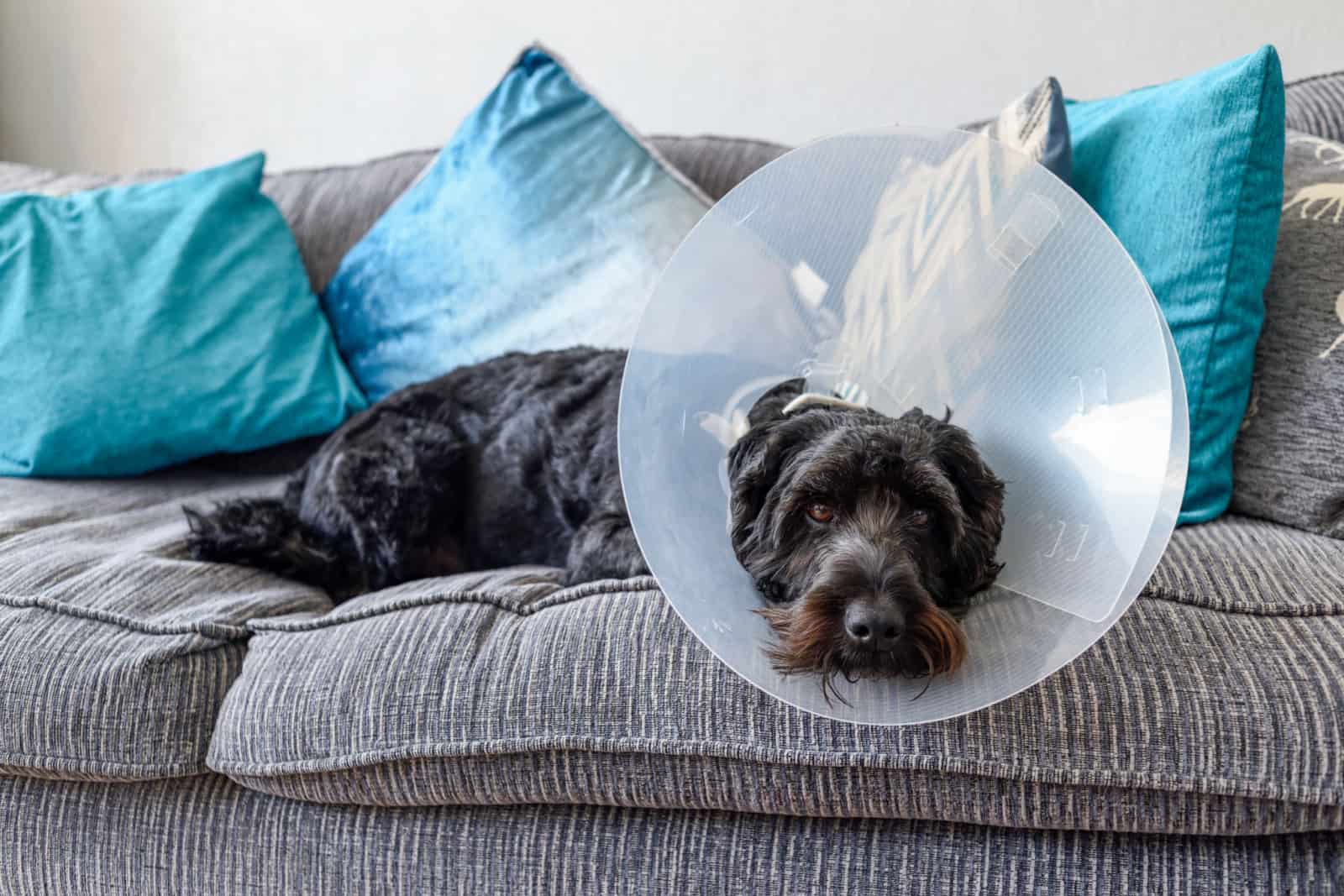Keeping an eye on your dog after surgery is never an easy job. Preventing a dog jump is harder yet. If your dog just went through neutering surgery, and you are on edge about it ripping the sutures, do not worry. There are things you can do to reduce the chance of it happening.
Dog owners, myself included, sometimes worry ahead of time because dogs can be very attracted to the prospect of doing the opposite of what is expected. After a spay surgery, there is a high possibility for this to happen, and taking the right measures is crucial in the first couple of days.
We will discuss possible complications and repercussions of this “my dog jumped after being spayed” scenario and what you can do to prevent it or fix it if your dog is high energy and the situation is inevitable.
Dog Jumps Make The Sutures Go Poof
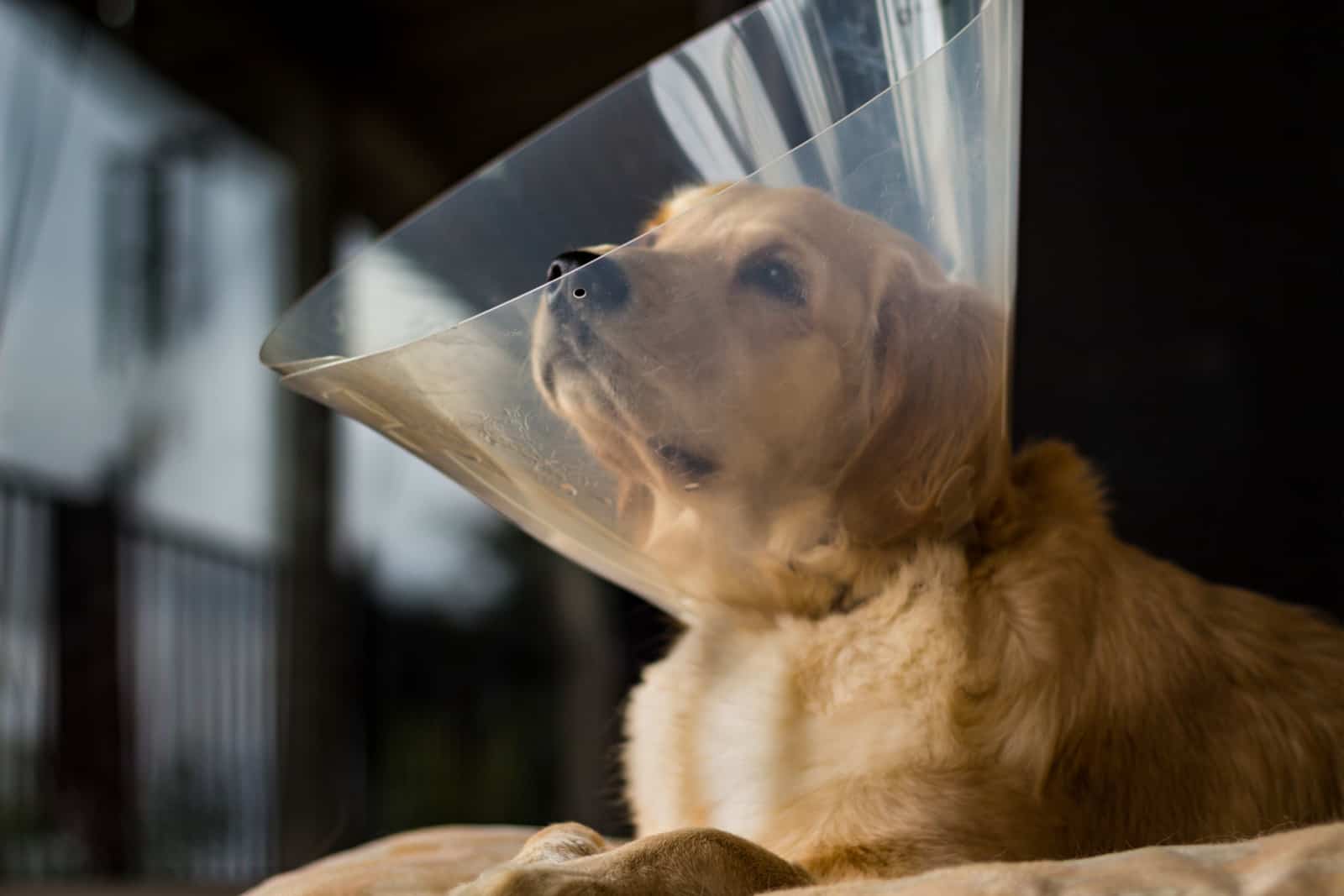
Dogs have little regard for healing processes. Their whims are stronger than sedatives, and physical activity is a way of releasing pent-up energy. A dog’s behavior prior to the surgery will be a good way to know what to expect in the recovery period.
If you have a high-octane doggie that cannot handle sitting or lying out through the day, you will probably have a lot on your hands to keep it from reopening the incision site. Even if your dog is a cuddle machine, one jump after getting back home could create problems for the wound.
Because the incision site is located directly at the abdominal muscle wall, any muscle contractions followed by a stretching movement have a high likelihood of breaking the stitches. Jumping on the couch to be closer to you seems harmless, but in the first couple of days, it can be dangerous.
It is always simpler to create a setting where your dog is prevented from any physical activity than rushing to the veterinarian after the deed is done. Dog lovers will agree that this is the best course of action despite having to say no to your dog’s favorite pastimes.
Breakdown Of Neutering And Spaying Surgery
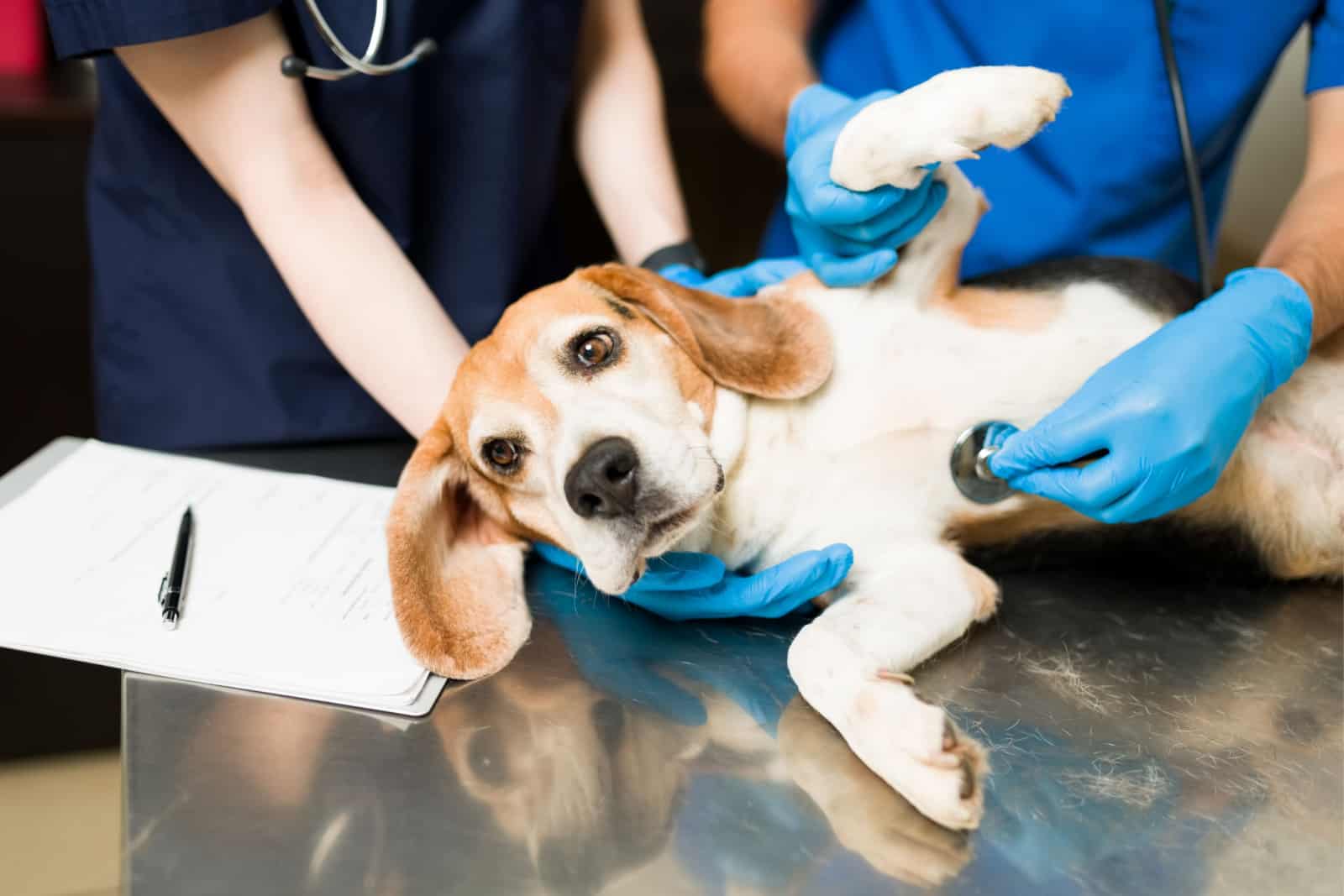
Neutering refers to removing the male reproductive organs (testicles) through an incision at the scrotum. It is generally a smaller incision site than in a spaying surgery (removal of female reproductive organs), so it lowers the chance of breaking the sutures.
To better understand the dangers that loom over your dog during the first few days of post-operative care, we need to go through a more detailed description of the procedures.
Spaying Surgery Procedure
First of all, your veterinarian of choice will have to do a full bloodwork panel to establish whether the dog is physically able to handle the anesthetic. Once that is confirmed, your dog will undergo routine surgery that most vets perform on a regular basis.
The administration of the anesthetic will put your dog in an unconscious state, after which the veterinarian will remove the hair around the planned incision site. This will expose the skin and provide a clear surgical site to precisely cut the tissue.
A scalpel is used to cut through the skin, fat, and muscle tissues on the abdomen, facilitating the removal of the ovaries, uterus, and fallopian tubes.
Exposing the organs for removal, the surgery then involves cutting the connecting tissue, followed by the excision of the individual reproductive organs. After successfully finishing that part, the veterinarian will close the incision site with absorbable sutures.
Keep in mind that there are several types of spaying based on the number of reproductive organs removed and the techniques involved.
Three Types Of The Traditional Spaying Surgery
What is a standard spaying surgery? Well, in the most common spaying procedure, all of the reproductive organs are removed: ovaries, uterus, and fallopian tubes. This means your female dog will be completely rid of procreational behavior.
This surgery is called an ovariohysterectomy and is the cheapest and most common spaying procedure performed on female dogs. There is a benefit to removing all reproductive organs — prevention of ovarian cancer.
The downside is that the surgery is invasive and includes more pain, followed by a more extended recovery period. How tough the recovery period and pain will mainly depend on the skill and experience of the performing veterinarian.
Slightly less invasive are hysterectomies and ovariectomies. The former includes only the removal of the uterus and part of the fallopian tubes, while the latter involves removing the ovaries.
A hysterectomy will leave the ovaries intact, which means estrogen and progesterone will still be produced, so reproductive behavior is not eliminated. Ovariectomy removes the ability of the female dog to be in heat and reproduce. The choice of surgery type is up to the owner.
A Less Invasive Spaying Surgery Alternative
Providing the most comfortable experience for your dog after a surgical procedure is important to pet owners. Laparoscopy is an alternative to the traditional spaying procedure.
It involves making a short series of smaller incisions instead of one large one. The good thing is that your veterinarian surgeon’s hands stay outside the dog’s body. A camera and guided surgical tools require minimal space, thanks to technological advancements in animal medicine.
The abdominal cavity will be filled with carbon dioxide to expand the available space and provide a better digital image of the inside of your dog’s body. With the use of electrocautery, there is minimal to zero blood loss, which means a shorter recovery period.
A cauterized blood vessel is much less likely to bleed and reduces the overall possibility of post-surgery complications. The risks are almost non-existent, but veterinary surgeons claim that it is not any less dangerous than traditional spaying.
However, research has shown that laparoscopy can reduce the amount of pain your dog feels after surgery by sixty-five percent. This benefit does come with a downside, and that is a higher price and vet experience using this method.
Neutering Surgery Procedure
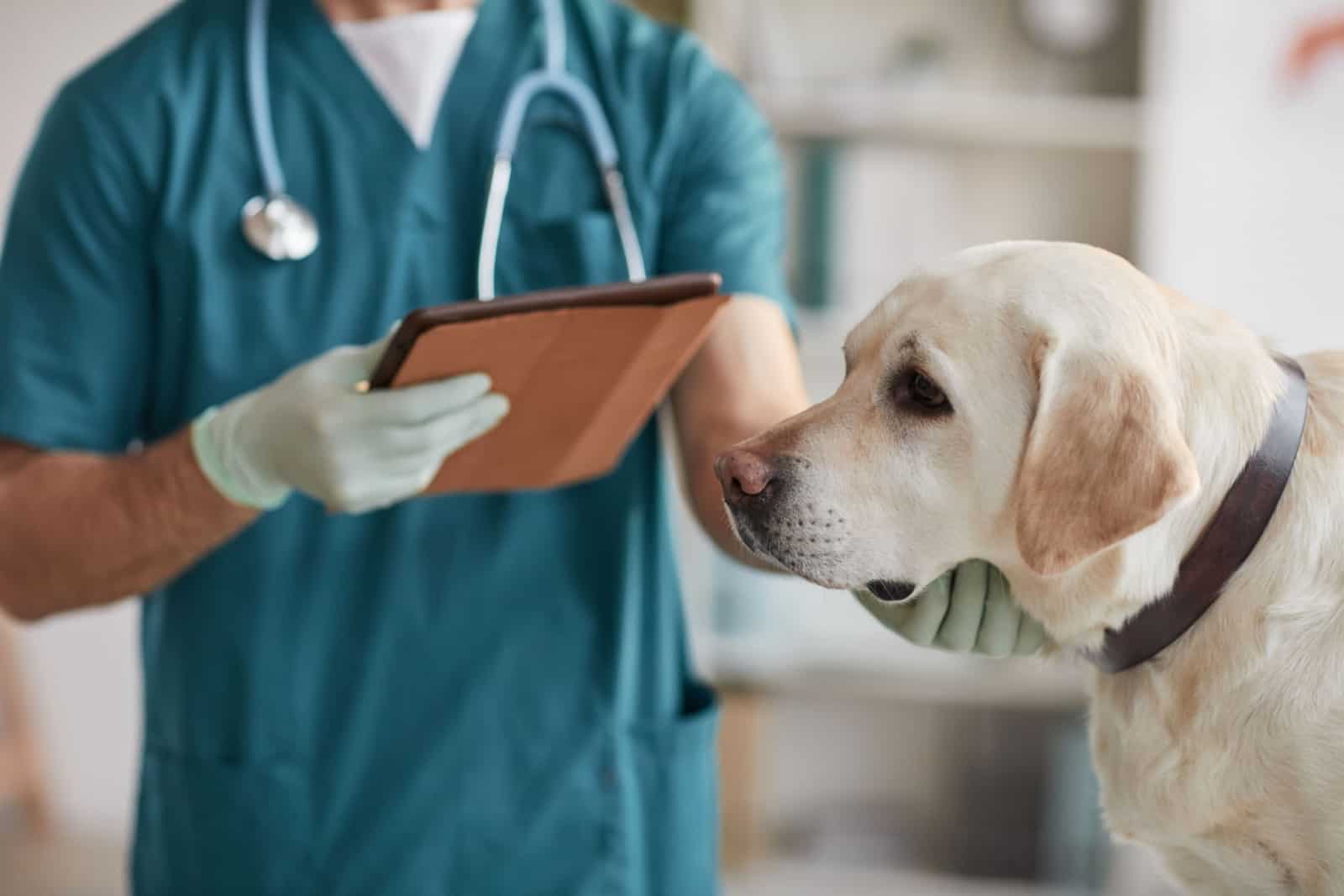
Very much like with the spaying surgery, neutering involves a full bloodwork panel before the procedure. The testicles are then removed through a small incision just above the scrotum.
There is another type of neuter surgery that involves cutting the vas deferens. This is a canal that connects the testicles and enables the sperm to reach the urethral duct. The procedure is called a vasectomy and will not remove procreation instincts and behavior.
Removal of testicles in male dogs is preferred to vasectomy because it reduces the chance of testicular cancer and gets rid of the breeding instinct behavior. That means no humping.
Recovery Period And Meds
The surgical site will be fully healed around four weeks after the procedure. After that period, the tissue will grow together for your dog to resume regular physical activity.
First-week issues are the most common since the lifestyle change will be night and day for both you and your doggie. Getting adjusted to less exercise, more lying around, and softer food can challenge your relationship, but you will definitely going to have some nervy situations.
Nonetheless, the first couple of days will consist of you being watchful of your dog’s every move. If your vet approves it, the second week can be therapeutic — short, light walks but no contact with water.
That is right, no bathing your dog, going out in the rain, or seaside adventures. Water is a petri dish for germs, so avoid it until the vet gives a green light (usually three weeks into recovery).
The vet will prescribe some pain meds appropriate for your dog. Non-steroidal anti-inflammatory drugs are the most common therapy. Some vets also prescribe antibiotic ointments to keep cutaneous bacterial infections at bay.
Noticing any side effects from the pain meds should be an immediate call to the vet. Prior to the operation, the vet will sometimes do an allergy test to check if the anesthetic or meds will cause a reaction in your dog.
Jumps Happen, So Consider This
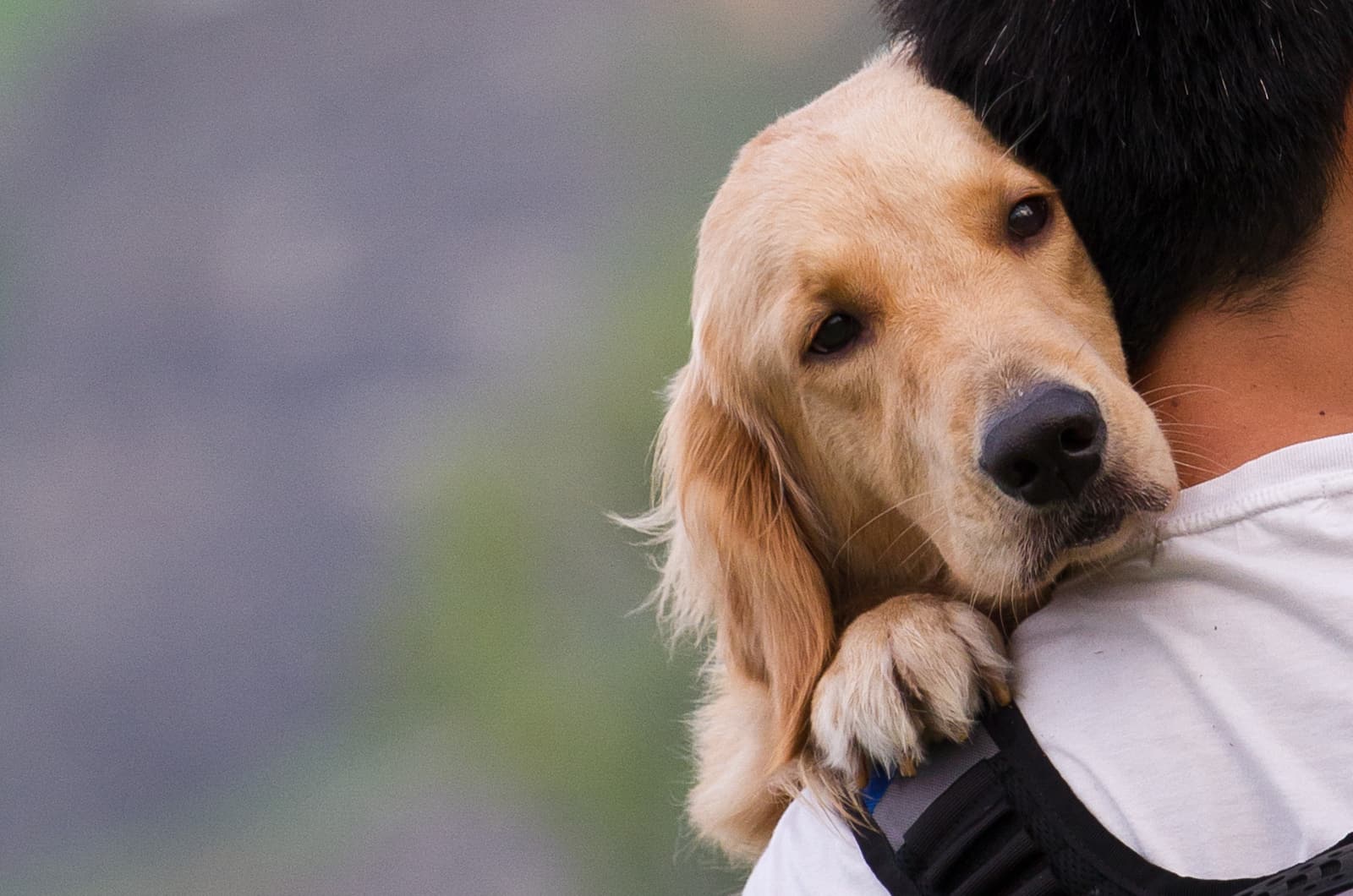
Sometimes the inevitable happens, and all it takes is two seconds of not looking at your dog. Even if you are looking at it, sitting by you on the couch or going upstairs to check some noise might be too good of an offer to refuse.
Most times, nothing will happen if your dog jumps after being spayed. If the couch or stairs are low in height, ninety-nine percent of the time, everything will be fine. If the jump requires completely lifting the hind legs and contracting the abdomen, then the sutures might give in.
This might happen before your follow-up at the vet’s office, which means worrying is an almost certain proposition. Never hesitate to pick up the phone and ask for vet advice.
In my experience, making your dog wear the e-collar and doing the preventive things from earlier always had good results. If you are still concerned, and your dog jumped after being spayed, here is what to look out for.
1. Check For Bleeding
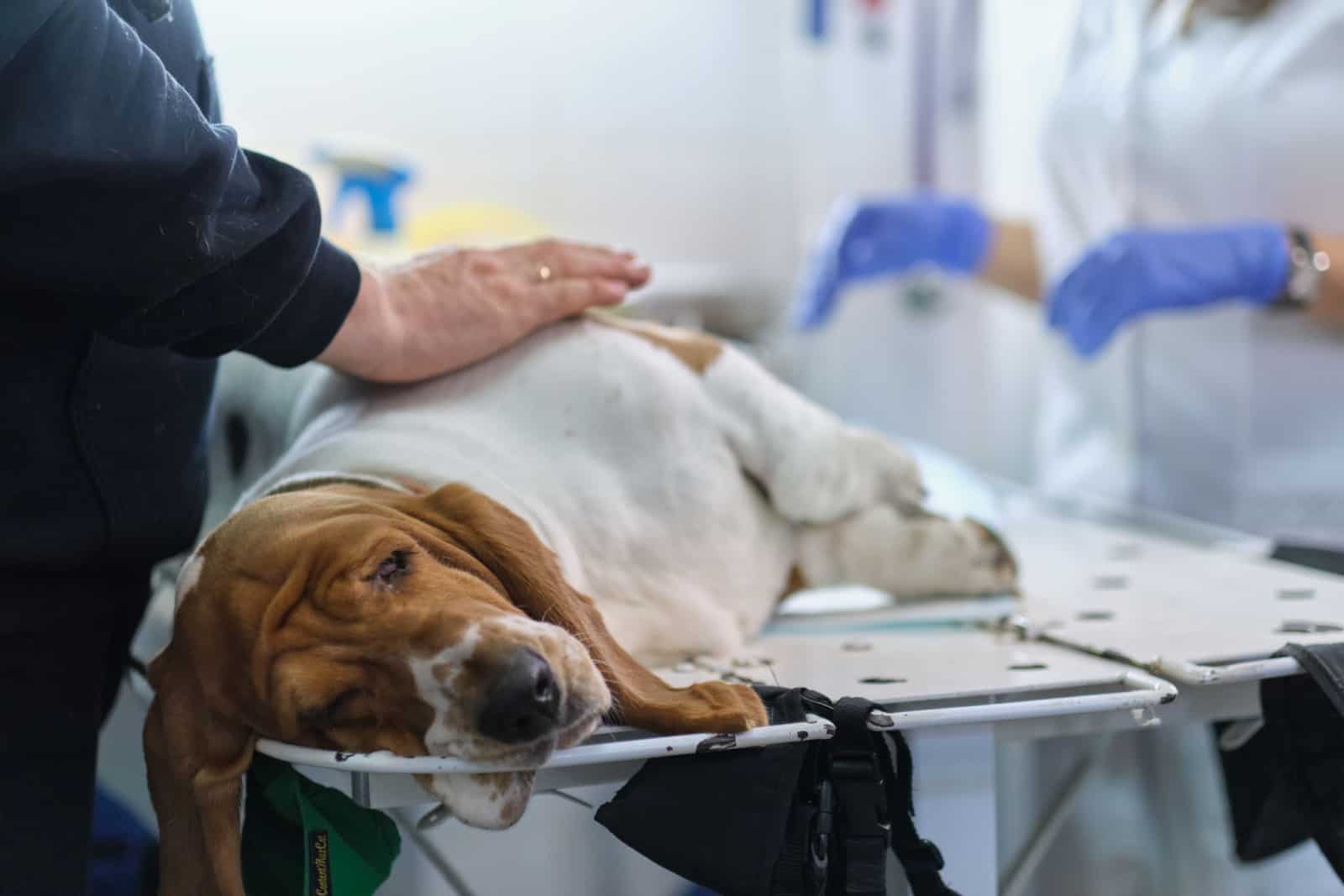
The primary concern with sutures breaking open is bleeding. A few of the stitches keep the blood vessels under the muscle tissue together, and the rest connect the abdominal muscle wall together so that organs and fat do not protrude.
Both sets of sutures have crucial roles in the healing process, and risking even one open suture can be dangerous for your dog’s health. If you notice blood around the surgical site, you should go to the vet immediately.
Leaving the wound open can lead to infection, which means more meds, more recovery time, and more pain. Another danger is that of bleeding out. Losing blood from a wound in a dog is a reality that can become fatal without a prompt reaction.
2. Lumps Around The Incision Site
Small or big, lumps are never a thing you should wait out. Calling your vet to describe the shape, location, etc., is crucial for a timely diagnosis.
Lumps around the incision site can mean many things. The most common is a seroma, but several things like hematomas, hernias, abscesses, and tumors can look very similar in the initial stages.
A seroma is not dangerous and is characterized as an accumulation of serous fluid around the capillaries. The fluid in seromas is transparent or a light shade of yellow and contains supportive elements that are part of blood plasma.
Physical activity such as jumping, running and pulling, or anything that puts a load on the abdominal muscles can cause a seroma, so make sure you inspect your dog’s incision site at least twice a day.
Stomach swelling can also begin as a lump. In rare cases, mistakes during surgery can cause complications that can cause serious problems with the dog’s internal organs. Here is an article on what conditions can cause a swollen stomach in dogs.
3. Colored Discharge Around The Wound
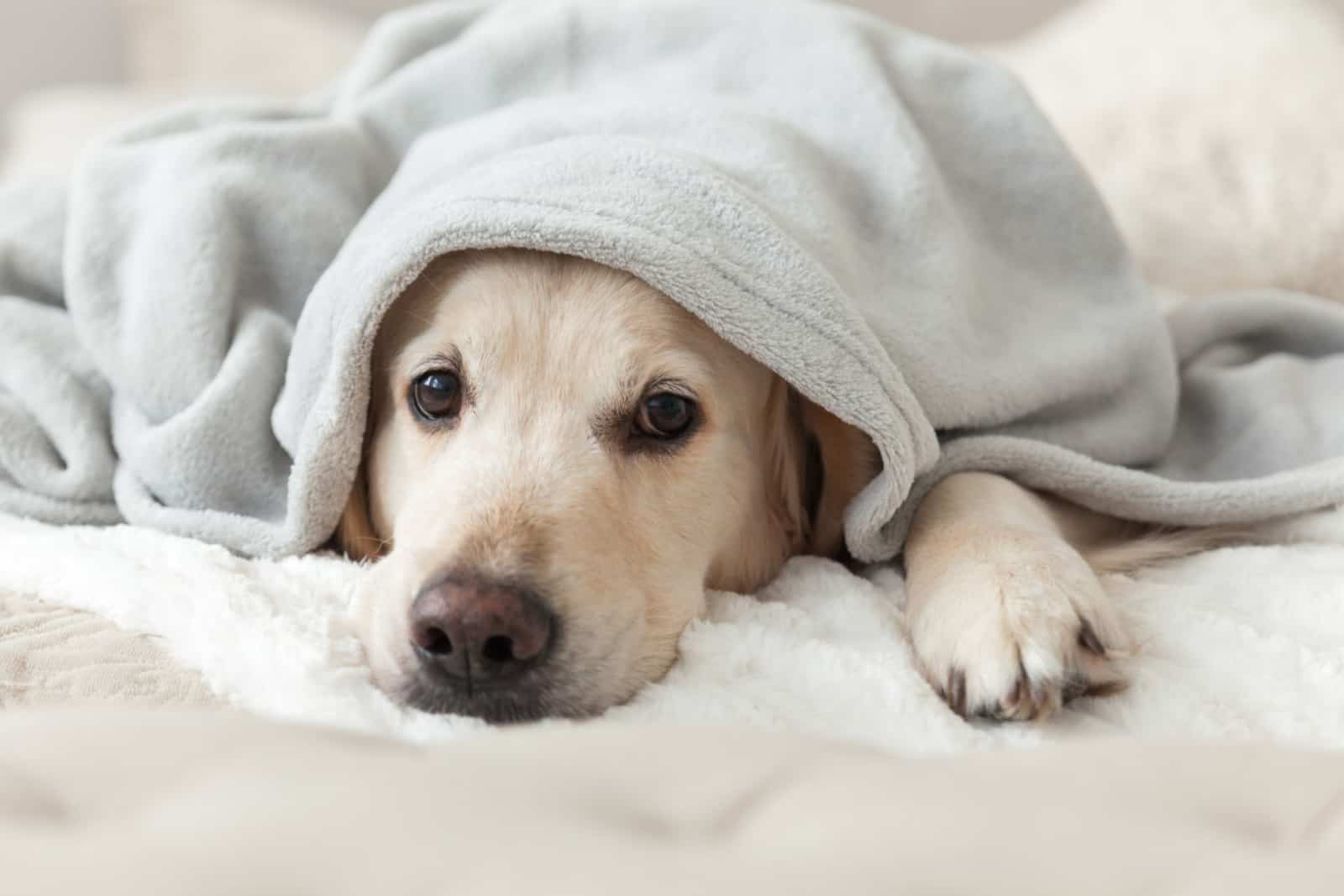
Even if the suture did not break, a microscopic strain in the tissues could allow germs, especially bacteria, to enter the wound. The bacteria can come from any place in the house the dog lied or sat on.
Feeding your dog softer food with more water content can cause diarrhea, so pathogens from the feces can find their way into the wound. Awkward pelvis positions due to possible pain can make your dog potty on its legs, so make sure to clean the coat and paws if that happens.
Yellow, green, or brownish discharge from the wound is a definite sign of infection, and you should immediately take action by getting your dog to the vet or animal hospital. A nasty smell emanating from the wound is another sign that points to infection.
4. Breathing, Eating, Peeing, And Potty
This might sound banal, but your dog’s breathing is one of the first signs of pain-induced stress or health problems. Fast, labored breathing is easily noticeable if you have your eagle eye on the dog.
An irregular breathing rhythm is harder to notice because the intervals between the changes can vary. However, panting is a telltale sign of something bad going on. You can perform a home breathing rate evaluation to make sure your dog is doing fine.
If your dog refuses to eat for a couple of days, you should call the vet or rush it to an animal hospital. Loss of appetite usually vanes with the anesthetic, and your dog should be eating by the end of the day.
The inability to urinate or potty can be a cause for concern. If your dog has not peed or pooped twenty-four hours after surgery, you ought to talk to the veterinarian. Bladder issues sometimes happen following spaying surgery.
How To Prevent Your Dog From Jumping After Being Spayed
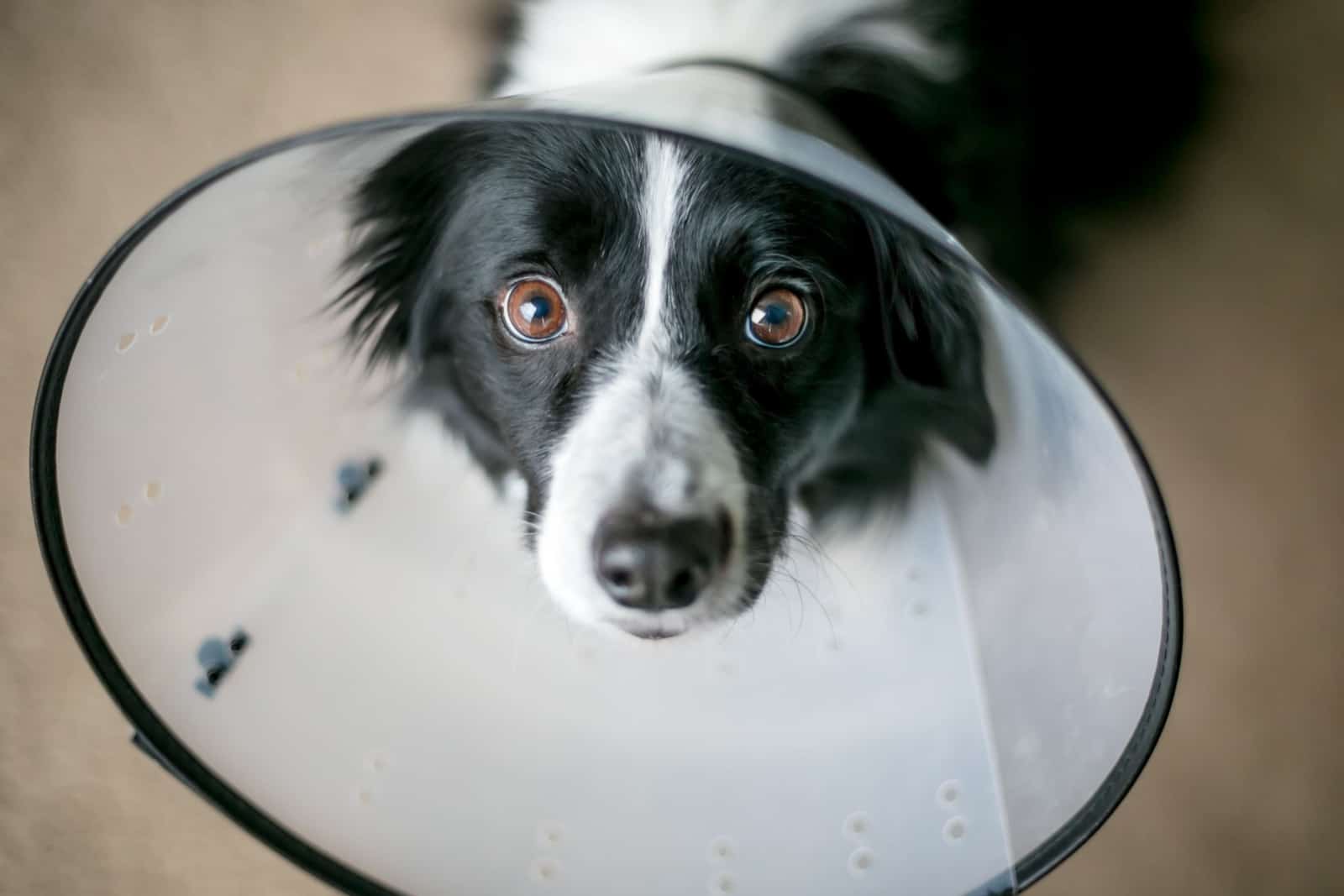
Your dog will receive some analgetic meds to handle the pain after surgery, but that is not enough. To stop your dog from licking and biting the incision site, you will need to use an Elizabethan collar (e-collar) or cone of shame.
The incision will be sore, and the sutures prone to breaking due to the softness of the tissue. Puppies will generally heal faster than adult dogs, but an e-collar is recommended regardless of the dog’s age.
One more makeshift thing you can do to prevent your dog from licking the wound is tying a t-shirt around the abdominal area. I would not recommend this as the fabric is easy to bite through, and getting an e-collar immediately is worth it over improvising for a day.
Additionally, you can use an alternative that is better accepted by both dogs and dog lovers, like pillow collars or neck bands. I am certain that most vets will be adamant the e-collar is the safest thing to use, though.
1. Keep Your Dog Calm
Although your dog will be sluggish and in pain after surgery, stretching its body and running a couple of laps around the house is a possibility. To prevent this, you can ask your vet to prescribe some mild sedatives to keep the dog in a low state of energy.
If you prefer doing the calming yourself, you can practice some “meditation” right next to your dog. Putting yourself in a serene and calm state will influence the dog’s behavior. A calm owner equals a calm dog.
When you notice your dog becoming nervous or moving in discomfort, try sitting next to it and slowly and gently petting its back and head. The slow movements will slow the dog’s breathing pace (increases when agitated), which in turn lowers the heart rate and calms it down.
For situations when you are not around the house (though someone should always keep an eye on the dog after spaying surgery), you can give your dog a t-shirt, blanket, pillow, or any item with your scent on it to soothe it.
Dogs in pain can feel insecure and become frightened by loud noises if you are not there, so comforting them is crucial in preventing ruptured sutures.
2. Monitor Your Dog’s Activity
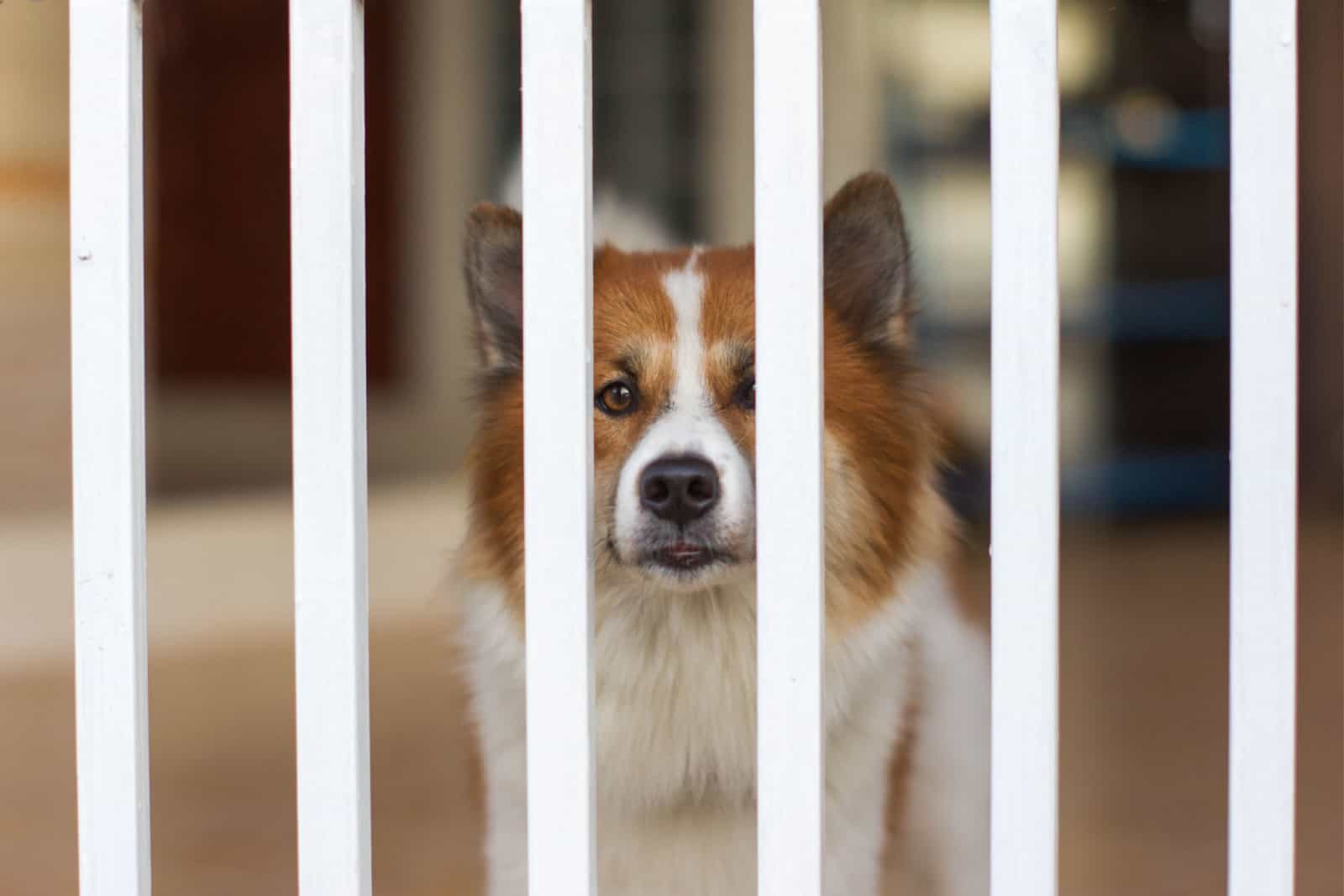
Living in a large house and your dog not being around you at all times can be an incentive for activities that might cause the surgical incision to break open. It is impossible for dog owners to be with their dogs twenty-four hours a day, so here are some tips on how to avoid reckless behavior.
Crates And Restricting Movement
Depending on the dog breed, you will have to make sure that your house becomes a dog spa for the two weeks following the spaying surgery. Medium and high-energy dogs will be more impatient to continue their daily activities, so a crate will be your best bet for keeping activity levels low.
Add some favorite toys or owner-scented items in the crate to promote calm behavior. Having a good understanding of what your dog likes doing is a sure way to reduce strenuous activity.
Having an inexpensive IP camera in your apartment can be helpful in analyzing what a dog does while you are away. This way, you can tailor the fun specifically for your doggie.
If your home has stairs, putting a doggie gate at the bottom of the stairs can prevent climbing and, in turn, a chance to break the sutures. If your canine friend likes sleeping with you in the bedroom, you can try and make a similar atmosphere on the ground floor.
Carrying your dog up the stairs is also an option, but beware of how you lift it. My dog does not like being carried and starts wiggling if carried, so keep that in mind too. Make sure to avoid putting pressure on the area around the surgical site if you decide carrying is the only option.
3. Challenging Food Toys
Investing in some puzzle feeders that will make the eating process longer and more challenging can prove useful down the road too. Your dog might refuse to eat the first couple of days, so be patient with re-establishing eating habits and appetite.
A kong is an amazing “mental” chewer that stimulates the dog’s mind. Put some delicious food your dog loves to eat and let them enjoy the process of getting to taste it. You can also make some sweet-potato treats to help your dog kill some time getting to the best part.
4. Get Those Brain Cells Working
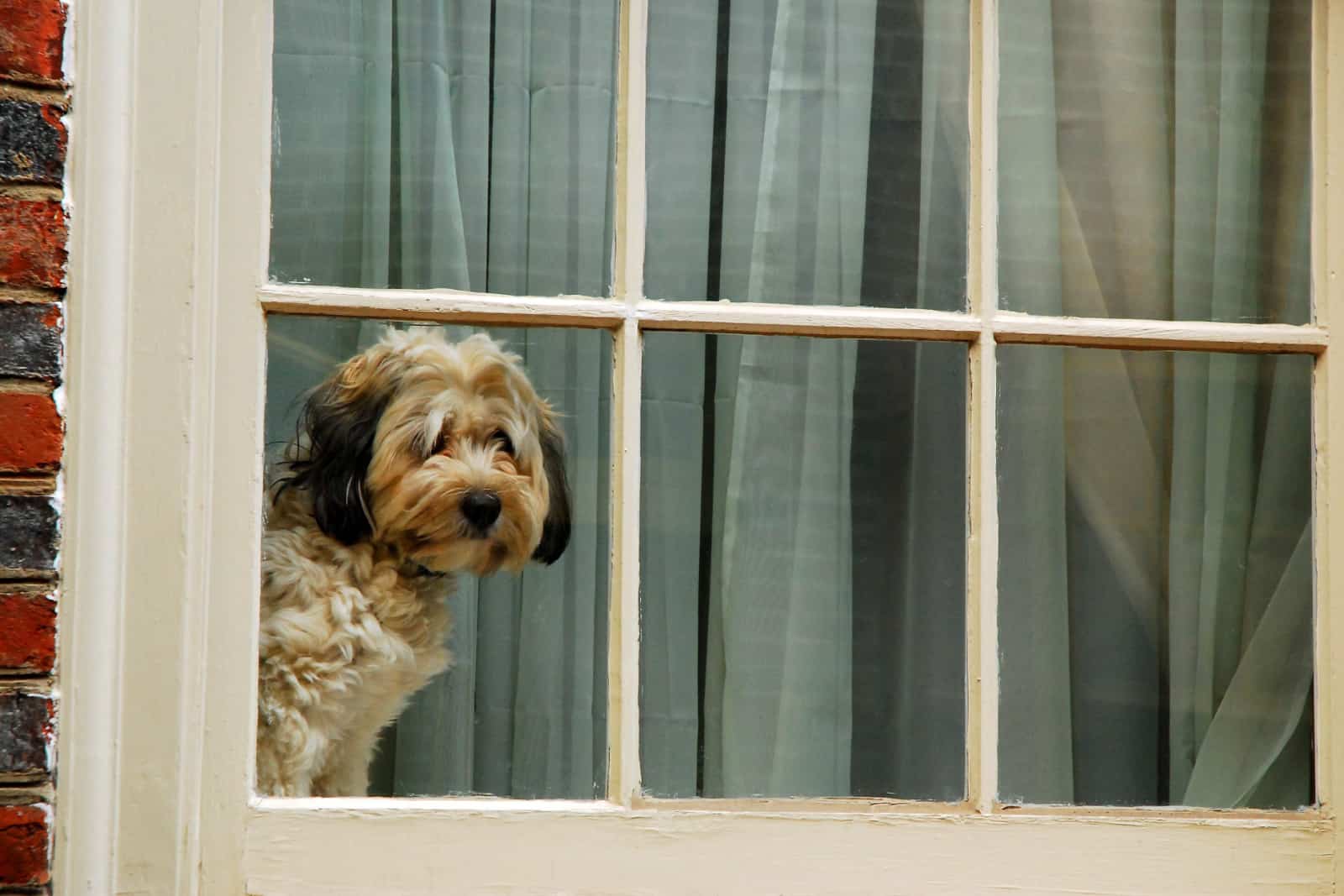
Since physical exercise is out of the question, plenty of mental stimulation is a must for dogs that easily get bored. Thankfully, there are quite a few options in this segment, so make sure you bookmark this one.
I know that most people think of physical activity when dog training is mentioned, but simple obedience training can be an effective way to refresh your dog’s memory on past lectures and forget about the post-surgery pain and discomfort.
For hours you spend away from home, try putting on some nature sounds playlists on Spotify or YouTube. Those can be beneficial for your dog’s state of mind. Research confirmed that certain types of music help alleviate stress in dogs.
If your dog is not a big chaser but loves observing the world around it, make sure you give it a good window spot to see what is going on outside. This works better with cats, but dogs will appreciate being aware of their surroundings.
Make sure that getting to this spot by the window does not involve jumping. You can make a ramp or stack some pillows for an easier climbing experience.
5. Playtime Is Possible Without Running And Jumping
Having fun does not necessarily mean an intense workout. There are a couple of ways to give your dog some playtime without putting sutures at risk.
One game dogs love to play is recognizing objects. If you are like me and have a box full of toys your dog never showed interest in, there is a way to put them to good use. Line them up in front of the dog and assign a short but distinctive word for each.
Use treats to make your dog understand the connection between the word you say and the object it is associated with. Once it gets the gist of it, your dog will look forward to playing the game.
A game that stuck as fun in my dog’s head even after surgery is what I like calling a cup-o-treat. It is a rudimentary game that involves hiding treats under a cup and mixing them up. At first, I put three treats under one cup, two under the second, and one under the third.
This helped incentivize my dog to continue playing. Gradually, I removed treats until only one cup had a treat. He still likes the game because it is a fun bonding activity.
Summary
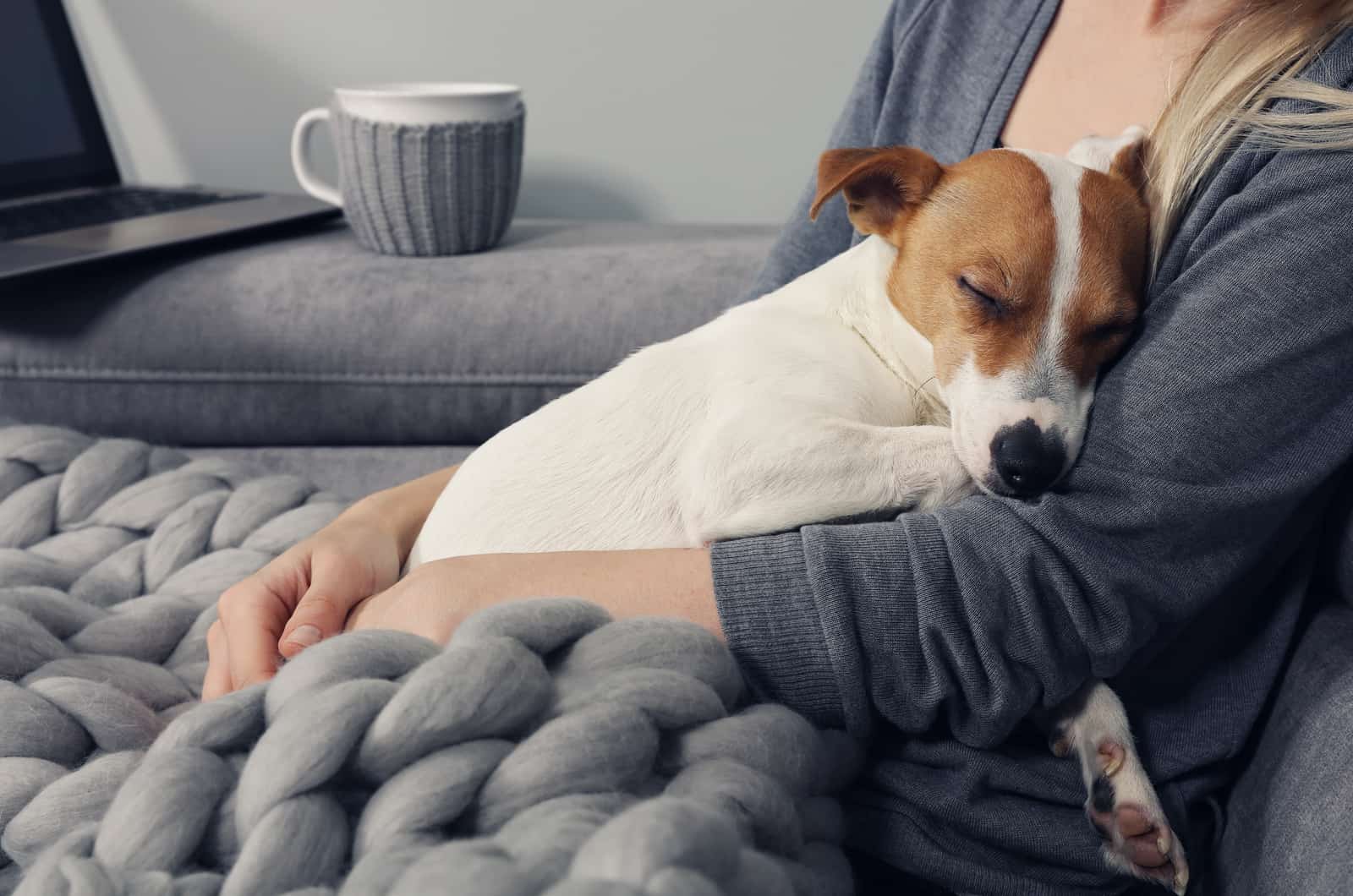
A vast majority of dogs will know better than to jump around and run while having pain in the abdomen. The most likely scenario will be that your dog curls up somewhere in the house to weather the storm.
The anesthetic wearing off will provide a few hours of rest immediately after surgery, but if you have one of those mad-for-playtime breeds, consult with the vet about giving small doses of sedative to keep it calm throughout the day.
Make sure you do everything in your power to prevent jumping and running. It is easier to break your dog’s heart by imposing a temporary ban on activity than to break the sutures. Do not forget to adjust the diet accordingly — softer food and plenty of water are crucial for a full recovery.
In case the sentence “my dog jumped after being spayed” ends up with broken sutures, infection, or a lump, do not waste time calling your vet, just show up at his office. He might not appreciate it, but your dog will.
Finally, use your dog’s recovery period to learn something new about your dog. Teach it new stuff because mental stimulation is a great way to remove the focus from pain and discomfort. Always try and have fun in these situations, and your dog will follow the lead.
